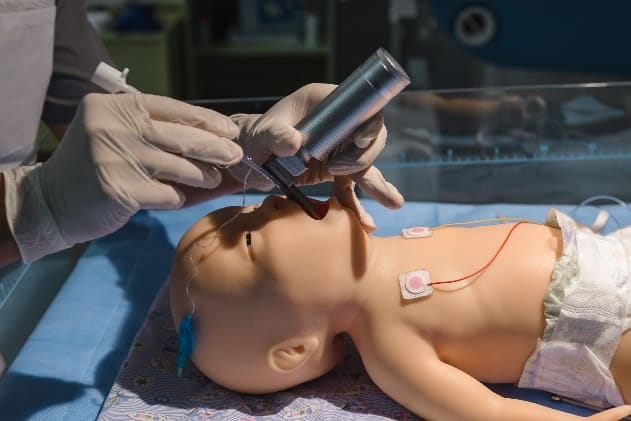Revolutionizing Medical Training with Baby Lung Simulators and Medical Training Manikins
In the dynamic world of healthcare, where every decision could mean the difference between life and death, the need for robust and realistic medical training is paramount. Enter the game-changers: Baby Lung Simulators and Medical Training Manikins. These innovative tools are transforming the landscape of medical education, providing practitioners with lifelike scenarios to hone their skills and enhance patient care. Let’s delve into each of these technologies and explore their impact on medical training.

Baby Lung Simulator:
Imagine having the ability to recreate the complexities of respiratory conditions in a controlled environment. That’s precisely what a baby lung simulator offers. These advanced devices replicate the physiology of the human respiratory system with astounding accuracy, allowing medical professionals to practice various procedures and interventions without putting real patients at risk.
Baby lung simulators simulate a wide range of respiratory conditions, from common ailments like asthma and pneumonia to more complex scenarios such as acute respiratory distress syndrome (ARDS). By adjusting parameters such as lung compliance, airway resistance, and gas exchange, users can customize simulations to meet their specific training objectives.
Medical professionals can use baby lung simulators to practice techniques like bag-valve-mask ventilation, endotracheal intubation, and mechanical ventilation. This hands-on experience enables learners to develop proficiency in airway management and respiratory support, essential skills in critical care settings.
Moreover, baby lung simulator provide immediate feedback on performance metrics such as tidal volume, respiratory rate, and oxygenation levels. This real-time assessment allows learners to identify areas for improvement and refine their techniques accordingly, ultimately enhancing patient safety and outcomes.
Incorporating baby lung simulators into medical training programs not only increases the efficiency of skill acquisition but also instills confidence in practitioners, preparing them to tackle real-life emergencies with competence and composure.
Medical Training Manikins:
Medical training manikins have come a long way from their rudimentary origins. Today, these sophisticated simulators closely mimic the anatomical structures and physiological responses of the human body, offering a realistic training experience for healthcare professionals across various disciplines.

These high-fidelity manikins are equipped with advanced features such as palpable pulses, interchangeable airways, and responsive vital signs monitoring. Some models even simulate spontaneous movements and vocalizations, further enhancing the immersive learning experience.
Medical training manikins cater to a wide range of training scenarios, from basic life support skills to complex surgical procedures. Practitioners can simulate scenarios such as cardiac arrest, trauma resuscitation, childbirth, and more, allowing for comprehensive skill development in a risk-free environment.
One of the key advantages of medical training manikins is their versatility. Educators can tailor scenarios to meet specific learning objectives, adjusting parameters such as patient demographics, clinical presentation, and response to interventions. This flexibility enables learners to explore various clinical scenarios and develop critical thinking skills essential for effective decision-making in real-world settings.
Furthermore, medical training manikins promote interprofessional education by simulating team-based scenarios involving healthcare providers from different disciplines. Collaborative training exercises foster communication, teamwork, and mutual respect among team members, ultimately improving patient outcomes through coordinated care delivery.
Baby lung simulators and medical training manikins are revolutionizing medical education by providing learners with realistic and immersive training experiences. By incorporating these innovative technologies into training curricula, healthcare institutions can ensure that their practitioners are well-prepared to navigate the complexities of patient care with skill and confidence.
Know more info: Medical training manikins

Comments
Post a Comment